The most common insect pests of the garden and vegetable garden
Gardeners and horticulturists are constantly striving to grow high yields. But their efforts can be hampered by several factors. One of them is insect pests. How to get rid of them or minimize the results of their activities?
Content:
Moth
Fruit moths are named after the type of trees they infect. Accordingly, there are apple, pear moths. They can damage quince, apricots... In appearance, these are small inconspicuous butterflies with gray-brown wings. The female lays eggs on the leaves and fruits of the plants. The larva, developing, eats away the middle of the fruit, leaving there the products of its vital activity. The fruit falls to the ground along with the larva, which leaves it and climbs up the trunk to another. During its life cycle, the larva can spoil about 5 fruits. Since there are many larvae, sometimes the entire crop falls off.
The main methods of struggle:
- Collecting and destroying the carrion.
- Installation of sticky trapping belts through which the larva cannot re-climb the tree.
- Placing fermented apple compote lures the apple moth butterflies.
- Having spread a plastic wrap under the tree, you can keep the larvae out of the ground for wintering.
- Use of trichogramma. These are small parasitic insects that lay their eggs in the eggs of the pest. While developing, the larva destroys the egg, preventing insect reproduction. Trichograms are valid until autumn. They need to be settled again next year. The garden after making the trichogramma is not treated with chemicals.
- Insecticide treatment (if other methods do not work).
A similar mechanism of action and methods of dealing with sawers. They differ for each species (plum, currant, grape), but have one characteristic feature - a long proboscis.
Aphids are green, brown and black
Aphids are small, about 1 mm long, insects. In Europe alone, there are about 1 thousand species of this pest. Some adults have wings, with the help of which they fly to other plants. Eggs begin to lay in the fall. Then young larvae, passing through all stages of development, turn into adult insects with wings and fly to other branches or trees.
Aphids are a dangerous insect that infect young shoots of shrubs, trees, and garden crops.
They especially love viburnum, roses, cherries... The danger is represented by the larvae, which accumulate in large quantities at the ends of young shoots and young leaves. Sucking the juice out of them, they lead to the fact that the leaves curl. They cannot provide nutrition to the stem, and it dries up. In addition, aphids carry a disease that causes the formation of gall outgrowths on the leaves. They weaken the plant.
Promote breeding aphids common ants on plants. They can even transfer it to new territories, populating it there in order to then feed on sweet honeydew secreted by aphids. Small birds (sparrows, tits, robins, linnet) can destroy aphids. They feed their chicks with them.Aphids are also destroyed by other insects: lacewings, ladybugs, and some types of wasps. But usually they are not enough to fight aphids.
Lacewing larvae can be bought at specialized institutions. They are released into the garden, and they themselves find aphids and destroy them. But it is impossible to apply chemical treatment with any kind of insecticide after that. Indeed, together with the pests, the poison will destroy the insects that have been moved in. You can fight aphids by washing them off with water under pressure, treating them with a solution of nicotinic acid (tablets are bought at a pharmacy). 50 tablets are diluted in 10 liters of water, then a liter of solution is poured into a bucket of water. Water the roots of plants with a solution. Prevention of aphid infestation - removal of weeds, thinning of plant branches. The ends of young branches of a sweet cherry affected by aphids can be cut off in the summer, after the harvest is ripe, and burned along with the pests.
Colorado beetle
The Colorado potato beetle is one of the most dangerous nightshade pests. Suffer the most potatoes, tomatoes, eggplant, scented tobacco, wild nightshade. There is information that sometimes the Colorado potato beetle can feed on leaves sweet pepper, physalis and dereza. His homeland is the north of Mexico, from where he penetrated into North America, and at the end of the 19th century - to Europe. At first, the centers of defeat were quickly eliminated, but during the First World War it settled in France, from where it began to settle throughout Eurasia. Since 2000, it has reached the Primorsky Territory.
The adult Colorado potato beetle is an insect up to 12 mm long and up to 8 mm wide. Its distinctive feature is 5 black longitudinal stripes on each wing. Anterior dorsum orange with black spots.
In its development, like all insects, it goes through 4 stages.
The first, yellow eggs, does not threaten the plant. They are laid on the underside of a leaf of a female insect immediately after the tops of the potatoes rise or the seedlings of tomatoes, the eggplants are planted in the ground. After a couple of weeks, larvae emerge from the eggs. They quickly begin to feed on nightshade leaves, acquiring a bright orange or pink color and gaining mass. The color depends on carotene, which accumulates in the body of the larva without being digested. The head of the larva is black; the same points are located longitudinally along the back in two rows.
In its development, the larva goes through 4 stages, molting after each of them. In the first stage, they feed on part of the leaf from below, in the second they eat the entire leaf, leaving the veins. They will then climb onto other stems or bushes in search of food. After 2 weeks, the larvae burrow into the ground to a depth of 10 cm. There they turn into a pupa and after a couple of weeks they can crawl out from there as adults. A new cycle of reproduction and development begins. Depending on the climate, there can be up to three such cycles. The farther north the region is, the fewer generations will appear in a year. An adult Colorado potato beetle or pupa overwinters in the ground. Not afraid of frost. It can enter diapause without dying if conditions are unfavorable for it.
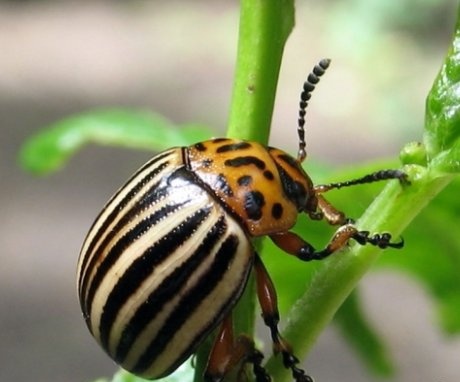
The horde of larvae leaves little to no chance for the nightshade to survive. Therefore, you need to deal with it regularly:
- The most reliable are the treatment of plants with insecticides. You can fight them by laying out traps and every day collecting adult beetles, and then larvae, if there are a couple of hundred square meters of potatoes on the plot. But unforeseen circumstances can prevent you from doing this for several days in a row. This time will be enough for the beetles and larvae to eat all the tops. The beetles are collected in a deep bowl with a strong solution of salt or kerosene. This is an extremely unpleasant activity.
- A week before harvesting potatoes, it is advised to cut the tops. Young larvae can die without feeding. But this will happen only when there is no food nearby - tomatoes, eggplant. In this case, they will all migrate to them, destroying leaves, fruits, stems. The worst thing is that it is much more difficult to treat a tomato area with chemicals than potato tops. After all, the fruits will fall directly under the influence of the poison.
- Instead of chemicals, it is better to use Fitoverm. This is a biological preparation of intestinal action. It belongs to the third class of hazard. Fruits after treatment with the drug can be harvested after 2 days. And the beetles will die in a week. If it rains during this time, the effect of using Fitoverm will significantly decrease.
- For pre-planting treatment of tubers, an insecticide of a prolonged form of action, for example, "Prestige", is used. It also contains a growth stimulant. But the drug itself is very dangerous to health, working with it requires compliance with all the rules for working with pesticides. Subsequent care steps after processing are performed mechanically, not manually.
- You can save tomatoes and eggplants for the longest possible period by lowering the roots of the seedlings for 2 hours in the Aktara solution. The package of the preparation (2 g) is dissolved in 2 liters of water. Beetles, eating the leaves of such plants, quickly die. The effectiveness of the method can be evidenced by the corpses of insects covering the surface of the earth around the plants. The leaves have time to grow, so the beetles will not bring much harm to the plant. A serious attack can begin as early as autumn, if the number of generations reaches three.
Preventive measures - do not plant nightshades for several years in a row in the same area. Then adult beetles will need some time in the spring in order to fly to a new site. But this will not save you from defeat, since the Colorado potato beetle can fly over long distances at a speed of 8 km per hour. By the way, beetles that your neighbors don't fight can quickly become your beetles.
Wireworm
Wireworm Is the larva of the click beetle. They look like pieces of copper wire about 2 cm long. Most often they live on acidic soils, which can be recognized by the presence of wheatgrass on the site. The wireworm is not as harmful as the Colorado potato beetle. He can gnaw potatoes and other grown root crops, leaving a course in them. After that, they become unusable. Gnaws at the roots of the young Luke, carrots and other plants grown from seeds. This can lead to their death.
Legumes scare away the wireworm well - sowing soybeans, peas, beans, lentils on the site will help to significantly reduce their number in this area.
Preventive measures - liming of the soil. Dolomite flour or slaked lime is introduced. Wheatgrass will leave the site, and with it the wireworm. Liming should be done every 3-7 years. If there are a lot of wireworms on the site, you can catch them with baits - pieces of old root crops. They bury them in the ground and mark these places.
You can tie the pieces to the fishing line. Once every few days, the bait is pulled out and the pests are removed. Repeat the procedure until harvest. Before sowing seeds, you can pour into the holes wood ash or spill them with potassium permanganate. 5 g of potassium permanganate is enough for a bucket of water.
Cabbage white
Cabbage white butterfly larvae can destroy cabbage or other cruciferous beds. Butterflies are distinguished by white wings with black veins. The edges of the wings are black. There are 2 black dots on the front fenders. Wingspan up to 6 cm.
Soon after they began to dance in circles in the garden or in the meadow, you should expect the appearance of larvae. It is difficult to notice the clutch of eggs, they are small and do not particularly stand out in color on the cabbage leaf. The length of one egg is slightly more than 1 mm.
Caterpillars with 16 legs are yellow-green in color, grow up to 3.5 cm, passing through 5 stages.
Their body is covered with fine hairs. In individuals of the fifth stage, stripes of yellow and green alternate along the back with a large number of black warts of various sizes. Caterpillars do not tolerate high temperatures (above 26 ° C) and dry air.
To scare away butterflies, it is advised:
- Hang the halves of the eggshell over the area. Butterflies, thinking that this is a "competitor", fly on.
- When using chemical and biological insecticides, an adhesive must be added to them. After all, cabbage leaves are very slippery, and drops of the substance often cannot cling to them, rolling down to the ground.
- There is an effective method of dealing with belan using trichogramma.
- To combat caterpillars, decoctions of tansy are used, yarrow, milkweed.
Medvedka
Medvedka - this is also an insect, but large. In length, it reaches 8 cm. Outwardly, the bear looks a bit like a cancer, but its front limbs are much smaller. There are wings, but very weak. Brown color. Lives in the ground, forming branched communications in the soil. Nibbles on plant roots to provide maximum temperature for offspring, which emerge from light brown egg-like eggs.
Bears winter in places where manure or humus accumulates, therefore, when introducing it into the soil in spring, you need to make sure that pests do not get there.
You can fight the bear by scattering a special bait before plowing. After the passages appeared in the garden, and the plants above them began to die, you can tear the ground around, destroy the nests with eggs, and pour water into the passages (there are two of them near the nest) with the addition of a substance with an unpleasant odor.
Having been on duty for 15-20 minutes, you can wait for the appearance of a bear, which must be destroyed with a sharp shovel. It has been noticed that the bears do not live in areas where moles are found. But the moles themselves bring a lot of worries. Therefore, it is hardly worth attracting them to the site to fight the bear.
More information can be found in the video:



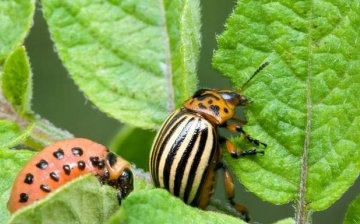


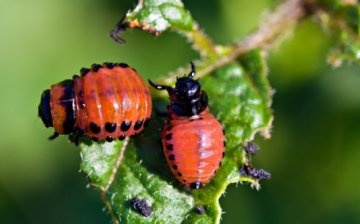
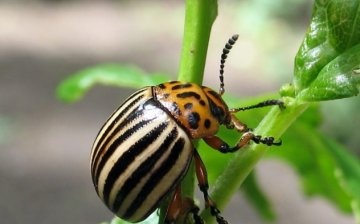
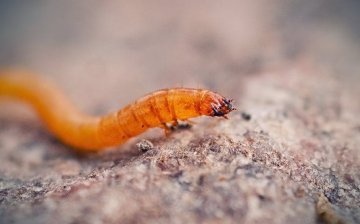
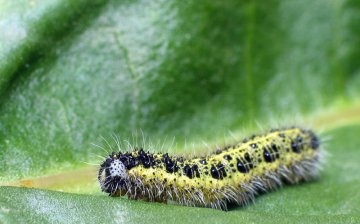
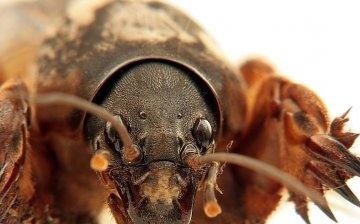








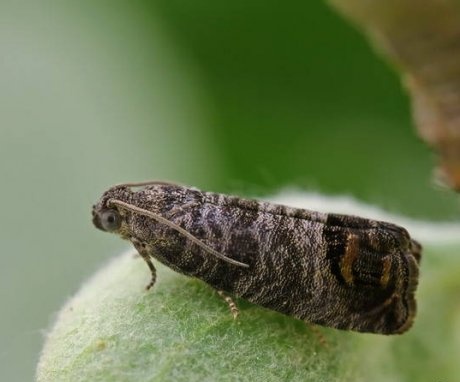

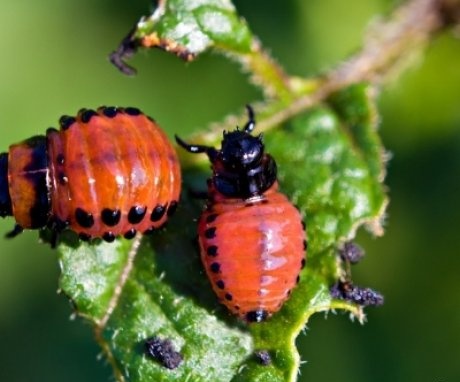
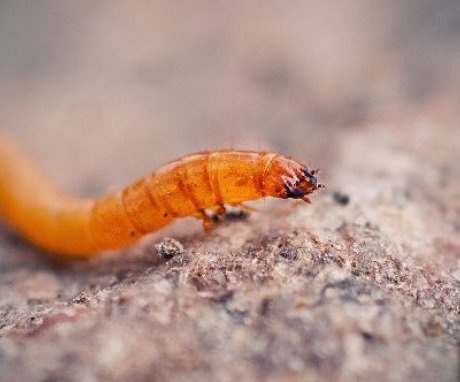
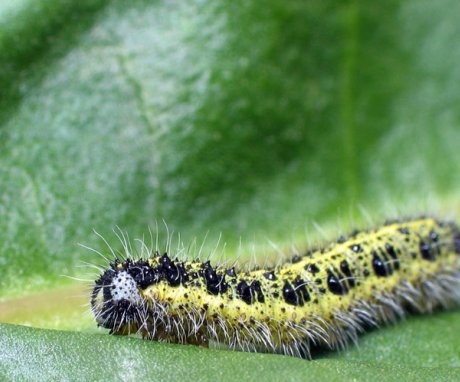
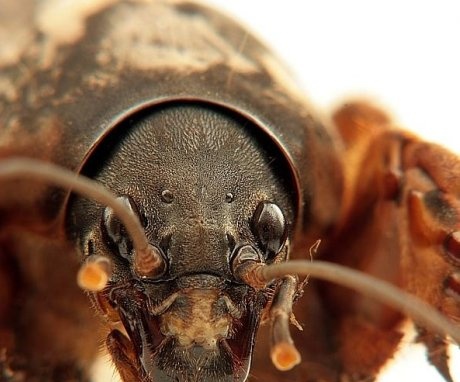
Aphids often appear in our garden, moreover, it is bred by ants. Therefore, it is necessary to fight not only with aphids, but also with ants too. Traditional methods do not help much in this last year, and we applied chemical remedies for cucumbers and zucchini. One spraying helped.
Of the most unpleasant pests I have encountered, I will single out a bear. This was a real problem for many plants, for several years I had to struggle with this pest for a long time and hard, and I still did not fully understand why they eventually disappeared.